Navigating Regulatory Compliance in Cross-Border Equipment Relocation: A Southeast Asian Perspective
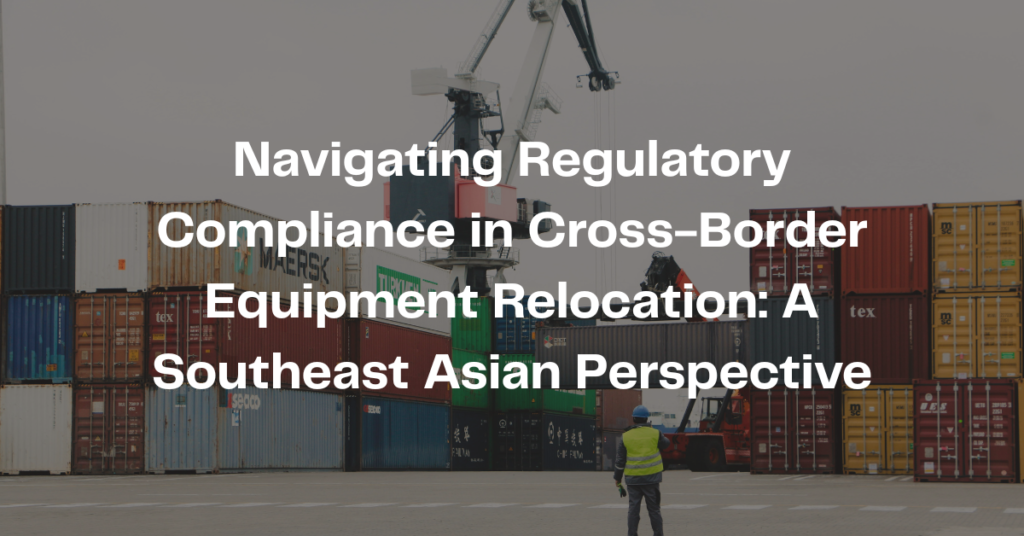
Cross-border industrial equipment relocation in Southeast Asia involves navigating a maze of regulations, certifications, and customs procedures. This article breaks down key import/export compliance requirements in Malaysia, Singapore, China, and neighboring countries—focusing on heavy machinery and strategic goods. Learn how Jaberson Technology ensures smooth, compliant relocations through expert documentation, regulatory research, and collaboration with local customs specialists.
The Role of Safety and Compliance in Industrial Equipment Moving
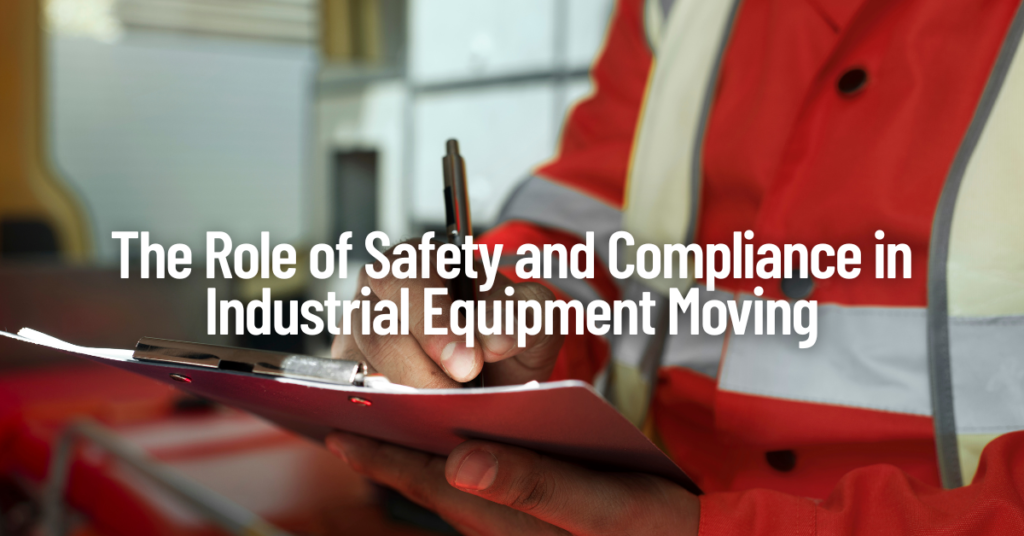
In industrial environments, equipment relocation is a high-risk task that demands more than logistics—it requires uncompromising safety and regulatory compliance. At Jaberson Technology, we prioritize engineered planning, certified rigging, and risk assessments to ensure every machinery move meets DOSH and OSHA standards. Discover how our safety-first approach protects your assets, people, and operations—because in heavy lifting, safety isn’t optional; it’s the standard.
Professional Machine Movers in Malaysia: Precision Relocation for Complex Industrial Machinery
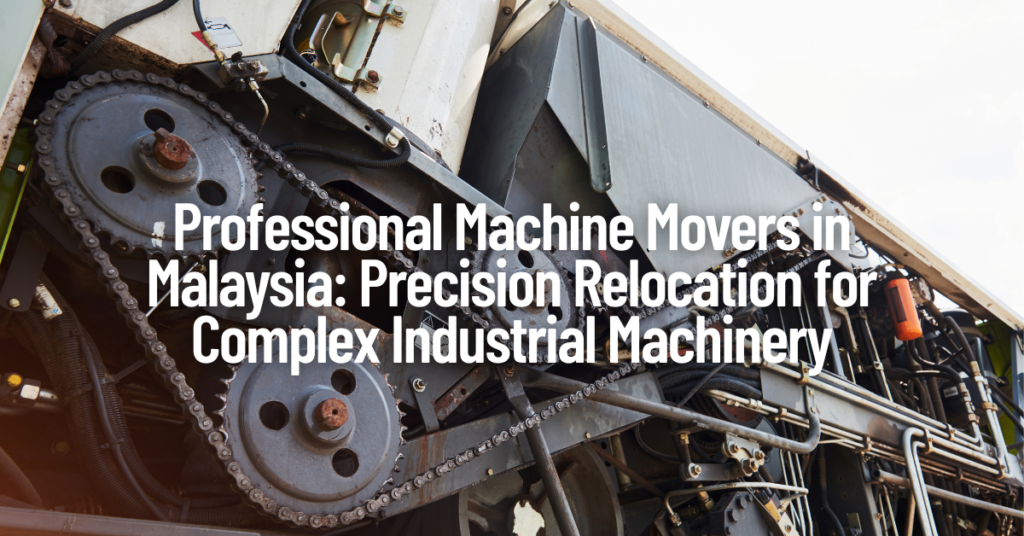
Relocating industrial machinery requires more than manpower—it demands technical expertise, precise planning, and certified handling. At Jaberson Technology, we provide engineered machine moving solutions across Malaysia, specializing in safe, efficient relocation of CNC machines, injection moulders, HVAC units, and more. From disassembly to reinstallation, our certified crew ensures zero compromise on safety or downtime. Discover why manufacturers trust us for critical equipment moves.
How to Plan a Successful Factory Relocation Without Disrupting Operations
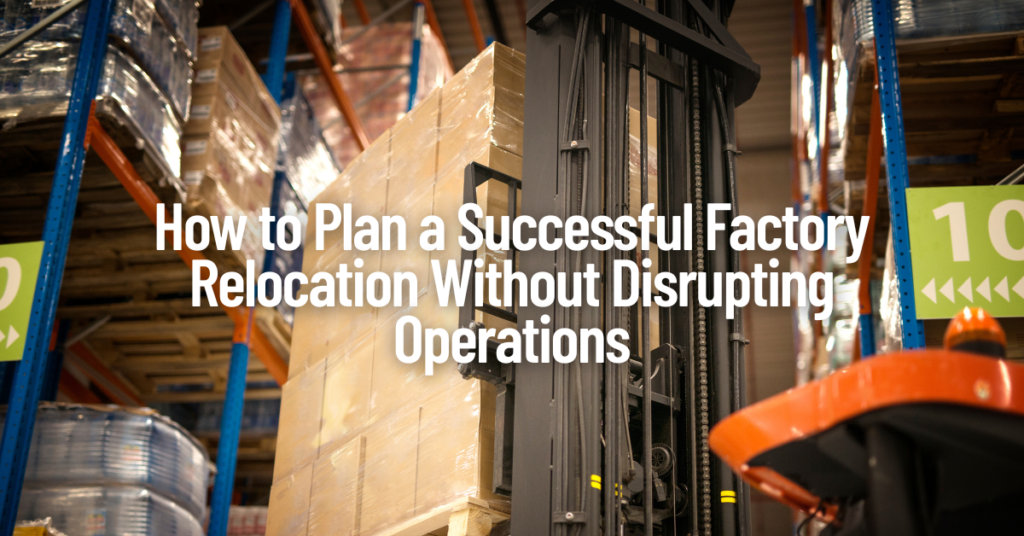
Factory relocation is a complex, high-stakes operation that demands precision planning, engineering expertise, and seamless execution. At Jaberson Technology, we specialize in end-to-end factory relocation services—from disassembly and heavy lifting to transport, reinstallation, and commissioning. With a proven track record across automotive, electronics, and pharmaceutical sectors, we ensure minimal disruption and maximum efficiency for every move.
How to Move Heavy Equipment Safely and Cost-Efficiently in Malaysia
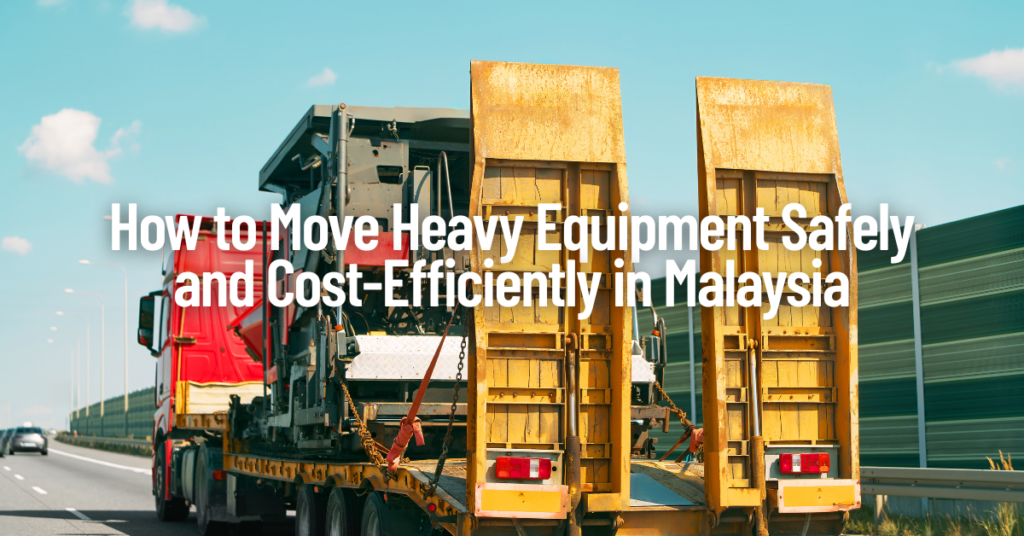
How to Move Heavy Equipment Safely and Cost-Efficiently in Malaysia Heavy Equipment Moving Services by Jaberson Technology Moving heavy equipment is not simply a matter of transport—it’s a highly coordinated engineering operation. At Jaberson Technology, we specialise in heavy equipment moving services that demand precision, field experience, and unwavering safety protocols. Whether you’re relocating high-tonnage machinery within a plant or moving sensitive industrial equipment across state lines, we bring the right tools, the right people, and the right planning to get the job done—safely and on schedule. Why Heavy Equipment Moving Requires Industrial Expertise In industrial environments, time is money—and so is precision. Every relocation must be executed with minimal operational disruption and zero compromise on equipment integrity. This isn’t a task for general movers; it requires specialised machinery movers with technical know-how and real-world experience. Heavy equipment often comes with: High center of gravity Complex mounting and anchoring systems Electrical, pneumatic, and hydraulic interconnectivity Tight working spaces and structural load restrictions A single misstep—like an unbalanced lift or improper rigging—can result in equipment damage, prolonged downtime, or even workplace injuries. That’s why industries ranging from manufacturing and logistics to energy, utilities, and infrastructure trust Jaberson Technology to handle their most critical assets. Our Structured Approach to Heavy Equipment Relocation At Jaberson Technology, we don’t believe in cookie-cutter solutions. Every project begins with deep technical planning, led by seasoned engineers and logistics experts. 1. Technical Site Assessment Before any equipment move, our specialists conduct an on-site audit to assess lifting points, overhead clearance, access routes, ground stability, and floor load ratings. These insights allow us to engineer safe and efficient moves from start to finish. 2. Customised Moving Plan Each relocation project is different. We develop a customised machinery moving plan covering lift configurations, rigging methods, transport logistics, reinstallation procedures, and contingency planning. All plans include formal risk assessments and method statements in compliance with local safety regulations. 3. Certified Equipment and Tools We deploy certified, heavy-duty lifting equipment suited to each project’s needs—such as: Hydraulic gantry systems Forklifts (up to 25-ton capacity) Modular skates and toe jacks Air cushion systems Truck-mounted and crawler cranes Every tool we use is maintained to the highest standards and certified for heavy equipment handling. 4. Skilled Machinery Moving Crew Our team consists of certified machinery movers, riggers, signalers, and site safety supervisors. With decades of hands-on experience in challenging factory environments, they ensure every task is executed with discipline and coordination. 5. Transport, Reinstallation, and Positioning Jaberson manages end-to-end logistics, including heavy haulage permits, escort vehicle arrangements, route surveys, customs clearance (for cross-border moves), and final machine placement, alignment, and levelling at the destination site. Equipment We Commonly Move We handle both small and large-scale equipment for various industries, including: CNC machines, lathes, and milling centers Press brakes, stamping lines, and hydraulic presses Generators, chillers, boilers, and HVAC units Control panels, power transformers, and switchgear Injection moulding machines and extruders Pharmaceutical and semiconductor machinery Whether you’re expanding capacity, upgrading infrastructure, or consolidating operations, Jaberson Technology provides the stability and confidence your move demands. Why Clients Trust Jaberson Technology Decades of experience in Malaysia’s industrial relocation sector In-depth compliance with DOSH, MOM, and ISO/OSHA safety standards Expertise across manufacturing, semiconductor, oil & gas, logistics, and utilities End-to-end project management with real-time client updates Fast response times and cost-effective planning Plan Your Next Heavy Equipment Move with Confidence Don’t risk downtime, damage, or costly delays. Let Jaberson Technology handle your next heavy equipment moving project with the engineering precision and care it deserves. Whether it’s a single CNC machine or a full production line, our team of professional machinery movers is ready to deliver a seamless relocation solution—on time and on budget. 📞 Contact us today to schedule a site evaluation or request a tailored proposal:🌐 www.jaberson-technology.com.my
Why Choosing the Right Lifting Gears Is Crucial for Industrial Safety and Efficiency

At Jaberson Technology, we provide certified lifting gears and turnkey rigging solutions for high-risk industrial moves. From machinery installation to oversized cargo handling, our expert team ensures every lift is safe, precise, and tailored to your site’s needs. Serving sectors like manufacturing, construction, oil & gas, and logistics, we combine top-grade equipment with engineering expertise—so you can lift with confidence, every time.
Top Benefits of Partnering with Professional Machinery Moving Experts

Relocating heavy machinery is a challenging task that demands expertise, precision, and careful planning. For businesses, ensuring the safety of equipment and minimizing downtime are top priorities. Partnering with professional machinery moving experts can help achieve these goals and much more. Equipment Safety and Protection Heavy machinery is often the backbone of operations and represents a significant investment. Any damage during relocation can lead to costly repairs or replacements. Professional movers bring specialized tools like hydraulic lifts and reinforced trailers, ensuring delicate equipment is handled with care. Their experience minimizes risks, protecting your assets throughout the process. Reduced Downtime Time is a critical factor in any relocation. Prolonged downtime can lead to production losses and missed deadlines. Professional movers streamline the entire relocation process, ensuring quick turnarounds. With their expertise, businesses can resume operations faster, avoiding unnecessary delays and keeping projects on track. Compliance with Regulations Relocating machinery often involves navigating complex regulations, including permits for oversized loads or restricted routes. Professional movers handle all necessary documentation and adhere to safety standards, ensuring compliance with local and international laws. This not only avoids fines but also ensures a smooth and legal relocation process. Customized Solutions for Unique Needs Every machinery relocation project comes with its own set of challenges. Professional movers offer customized solutions tailored to specific requirements. They conduct site assessments, develop detailed plans, and use innovative techniques such as synchronized lifting or equipment dismantling to address unique challenges effectively. Enhanced Workplace Safety Moving heavy machinery without proper training and equipment can put your team at risk. Professional movers employ trained and certified operators who follow strict safety protocols, reducing the likelihood of accidents or injuries. This protects both your team and your equipment, ensuring a safe and efficient relocation process. Long-Term Cost Efficiency While hiring professionals may seem like an additional expense, it often saves money in the long run. Proper handling prevents equipment damage, reduces downtime, and ensures compliance with regulations. By outsourcing machinery relocation, businesses can focus their resources on core operations, optimizing productivity and reducing overall costs. Final Thoughts Relocating heavy machinery is a critical task that demands expertise and meticulous planning. Professional machinery moving experts bring the skills, tools, and experience necessary to execute relocations safely and efficiently. By choosing the right partner, businesses can protect their investments, minimize downtime, and ensure a seamless transition, keeping operations running smoothly.
Key Strategies for Streamlining Project Logistics Across Industries
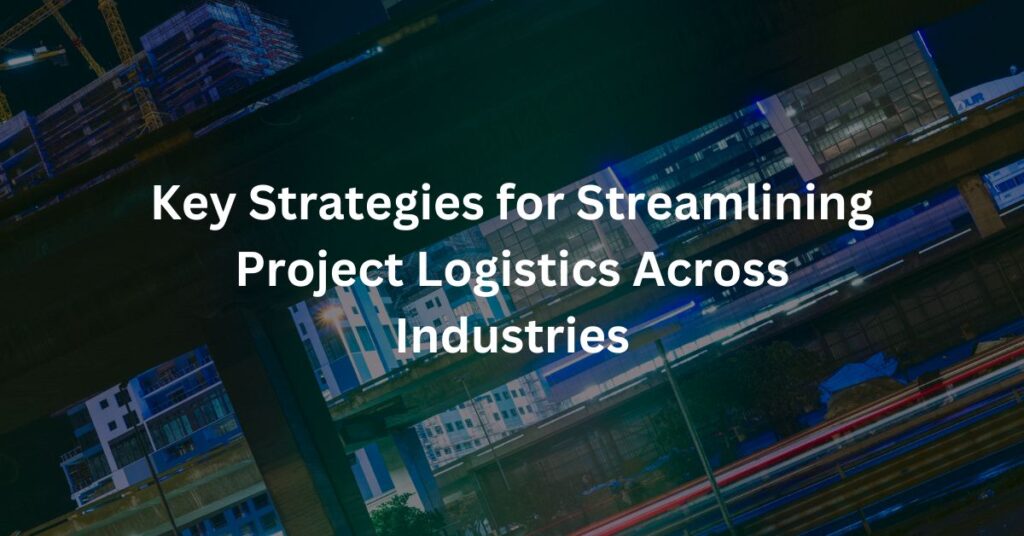
Key Strategies for Streamlining Project Logistics Across Industries Efficient project logistics is the cornerstone of successful operations across industries, from construction to manufacturing. With so many moving parts—transportation, warehousing, and coordination—having clear strategies can ensure smooth execution and cost efficiency. Let’s explore the key approaches that help streamline project logistics and deliver results. The Challenge of Modern Project Logistics In today’s globalized world, project logistics faces unique challenges: Tight Deadlines: Projects often require goods to arrive on-site just in time. Complex Coordination: Multiple stakeholders, suppliers, and locations add to the complexity. Cost Control: Rising fuel prices and operational costs demand smarter solutions. Understanding these challenges is the first step toward developing strategies for success. Strategy 1: Centralized Coordination A central logistics hub or team ensures seamless communication and decision-making. Unified Decision-Making: All stakeholders access real-time updates and align on project goals. Technology Integration: Use logistics management software to track shipments, manage inventories, and schedule deliveries. Example: Centralized coordination reduced delays by 30% in a cross-country power plant installation project. Strategy 2: Optimize Transportation Services Transportation is a significant cost factor in project logistics. Optimizing routes and methods can yield substantial savings. Multi-Modal Transport: Combine road, rail, air, and sea transport for maximum efficiency. Route Planning: Use GPS and AI tools to avoid delays caused by traffic or weather conditions. Pro Tip: Partnering with experienced transportation services providers ensures timely and cost-effective delivery. Strategy 3: Leverage Warehousing Services Strategically located warehouses act as buffers to prevent delays and manage inventory effectively. Regional Warehouses: Reduce lead times by storing goods closer to project sites. Cross-Docking: Minimize storage needs by transferring goods directly between transport vehicles. Did You Know? Businesses using regional warehousing services often reduce delivery times by up to 50%. Strategy 4: Plan for Contingencies Even the best logistics plans encounter unexpected challenges. A robust contingency plan is essential. Risk Management: Identify potential disruptions (e.g., weather, equipment failure) and prepare backup plans. Flexible Contracts: Negotiate with suppliers for quick adjustments in case of delays. Insight: Contingency plans saved a major construction project $500,000 by mitigating supply chain disruptions. Strategy 5: Invest in Skilled Professionals Experienced professionals bring expertise and foresight to project logistics. Logistics Coordinators: Ensure smooth communication between teams. Certified Operators: Handle specialized equipment like cranes or heavy lift rigs safely and efficiently. Example: Skilled project managers reduced downtime by optimizing schedules and resource allocation. Final Thoughts Streamlining project logistics is not just about moving goods; it’s about aligning people, processes, and technology to achieve efficiency and reliability. By focusing on centralized coordination, optimizing transportation, and investing in skilled professionals, businesses can overcome logistical challenges and meet their project goals. No matter the industry, mastering project logistics ensures every part of the process runs like clockwork.
The Role of Heavy Lift Rigging in Complex Construction Projects

Introduction Heavy lift rigging is the backbone of many large-scale construction projects. From skyscrapers to industrial complexes, heavy lift solutions bring the power and precision needed for successful execution. Let’s break down the critical areas where heavy lift rigging plays a transformative role in construction. Case in Point: The Skyscraper Challenge Imagine constructing a towering skyscraper in a busy city center. Massive steel beams, glass panels, and machinery weighing hundreds of tons must be lifted with millimeter precision. This is where heavy lift rigging shines, ensuring: Accuracy: Advanced equipment positions components with absolute precision. Safety: Certified operators and stringent protocols prevent accidents. Why Heavy Lift Rigging Matters Safety First Heavy lift operations are inherently risky, but a professional rigging team minimizes hazards through: Detailed planning. Specialized equipment, such as load balancers and slings. Real-time monitoring systems. Efficiency Boost Every delay in construction costs money. Heavy lift rigging speeds up timelines by: Reducing manual handling. Completing tasks in fewer steps using advanced machinery. Versatility From bridges and wind turbines to refinery components, heavy lift rigging adapts to diverse projects across industries. Tech Spotlight: Innovations in Rigging Modern heavy lift rigging uses cutting-edge technology to solve challenges: Synchronized Lifting Systems: Perfect for distributing weight evenly across multiple cranes. Hydraulic Gantries: Compact and powerful, ideal for tight spaces. AI-Driven Load Monitoring: Predicts and prevents potential risks during operations. Top 3 Tips for Choosing a Heavy Lift Rigging Partner Assess Their Track Record: Look for providers with experience in similar projects. Check Equipment Standards: Ensure they use modern, well-maintained machinery. Demand a Custom Plan: Your project deserves a tailored approach, not a one-size-fits-all solution. Did You Know? The heaviest load ever lifted using heavy lift rigging was over 20,000 metric tons—a testament to the industry’s incredible capabilities. Conclusion Heavy lift rigging is more than just a construction support service; it’s a critical enabler for some of the world’s most ambitious projects. By combining technology, safety protocols, and expertise, heavy lift solutions ensure construction projects are completed efficiently and effectively. When you need to move the immovable, heavy lift rigging is the answer.
How Warehousing Services Can Boost Supply Chain Efficiency
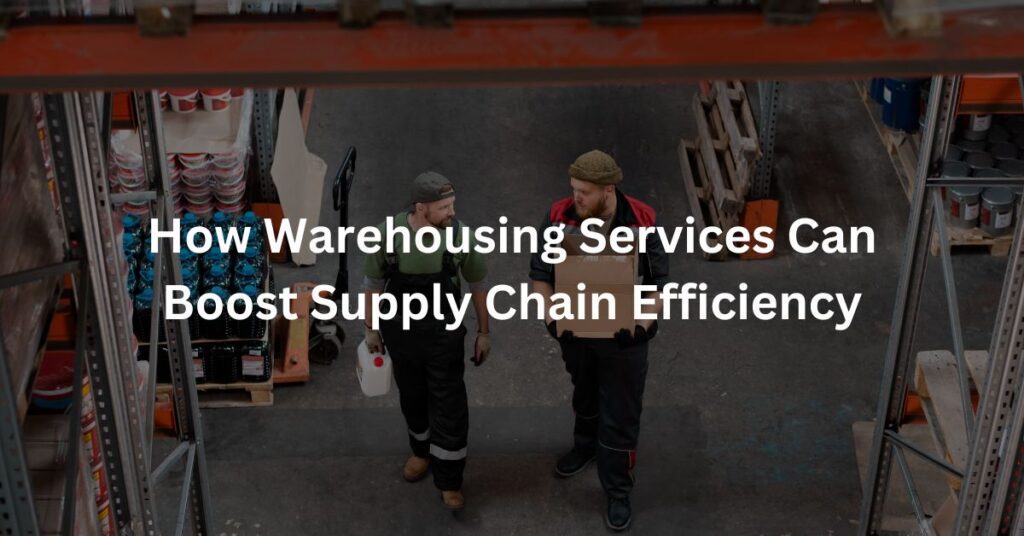
Efficient supply chains are the backbone of successful businesses, ensuring goods flow seamlessly from production to delivery. One critical aspect often overlooked is the role of warehousing services. Far from being just storage facilities, modern warehouses are dynamic hubs that drive efficiency, reduce costs, and improve customer satisfaction. Here’s how warehousing services can enhance supply chain performance. 1. Strategic Storage Locations Warehouses situated near key transport routes, ports, or customer hubs significantly reduce transit times. Faster Deliveries: Proximity to your customers means reduced lead times. Cost Savings: Shorter transportation routes lower fuel and labor costs. Example: A strategically located warehouse can cut shipping times in half, helping businesses meet tight deadlines and retain customer trust. 2. Inventory Management Excellence Warehousing services offer advanced inventory management systems (IMS) that track stock levels in real-time. Avoid Stockouts: Real-time tracking ensures you always know what’s in stock and what’s running low. Reduce Overstocking: Data-driven insights help optimize inventory levels, reducing holding costs. Pro Tip: Modern IMS tools can integrate with your supply chain system, providing seamless updates on inventory movement. 3. Improved Order Fulfillment Processes Efficient warehousing services streamline order picking, packing, and shipping processes. Optimized Workflows: Automation tools like conveyor belts and robotic arms enhance speed and accuracy. Fewer Errors: Organized storage layouts and barcode scanning minimize mistakes, ensuring the right products reach customers. Did You Know? Businesses using automated order fulfillment systems report up to 99.9% accuracy rates. 4. Seasonal and Scalability Benefits Demand fluctuations are common, especially during peak seasons. Warehousing services provide flexibility to scale operations as needed. Seasonal Stockpiling: Store extra inventory ahead of high-demand periods like holidays or promotional sales. Scalable Solutions: Increase or decrease storage space as your business evolves. Insight: Flexible warehousing contracts allow you to adapt quickly to market changes without long-term commitments. 5. Value-Added Services Many modern warehouses go beyond storage, offering additional services that add value to supply chains. Packaging and Labeling: Save time and costs by outsourcing these tasks to the warehouse. Cross-Docking: Directly transfer goods from inbound to outbound transportation, reducing storage time. Pro Tip: Partner with warehousing providers offering value-added services to simplify logistics and lower operational costs. 6. Enhanced Risk Management Warehousing services play a key role in safeguarding goods from risks such as theft, damage, or natural disasters. Security Measures: 24/7 surveillance, access controls, and alarm systems protect inventory. Climate Control: Specialized storage environments maintain product integrity for sensitive items. Example: Cold storage solutions are essential for industries like pharmaceuticals and food, ensuring goods remain safe and compliant with regulations. Final Thoughts Warehousing services are more than storage spaces—they are strategic assets that can transform supply chain efficiency. By optimizing inventory management, improving order fulfillment, and offering scalability, modern warehouses ensure your business stays competitive in today’s fast-paced market. Whether you’re focused on reducing costs, meeting customer expectations, or enhancing logistics, investing in the right warehousing solution is a step toward sustainable growth.
